Overwatch 2 ranks: Competitive mode details and rewards
Overwatch 2 ranks, still tier divisions, and rewards, explained.
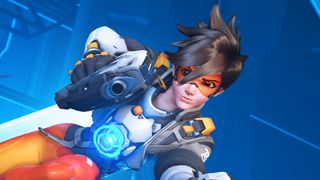
Overwatch 2 ranks have dramatically changed in season 9. There are new weapon skin rewards and a new system that helps you track your rank progress after each match.
Competitive matches now end on a screen that shows your progress toward the next skill division. Overwatch 1 players will be familiar with watching a number go up and down every match as opposed to the way the previous system obscured that information until your rank update. The only thing that can change how much your rank progress goes up or down are the "modifiers", which I'll explain below.
Overwatch 2 has two main ranked modes: Role Queue and Open Queue. You need to win 50 Quick Play games in Overwatch 2 or have previously owned Overwatch 1 to unlock and play both ranked modes.
Role queue locks your team composition to one tank hero, two damage heroes, and two support heroes. You select the roles you want to queue for, play matches, and get an individual rank for each role.
Open Queue is a free-for-all like the original Overwatch was back in 2016. You can choose any hero in any role and you receive one, universal rank.
Unlike in previous Overwatch 2 competitive seasons, you won't need to play games to earn a rank again. Instead, you have to complete 10 placement matches every year for each role. As you play each match, the game will predict what rank you'll end up with based on your performance.
From there, your rank will update whenever you fill the bar toward your next skill division, or, if you're struggling, when it drops down to the previous skill division.
Overwatch 2 ranks
All the Overwatch 2 ranks you can earn
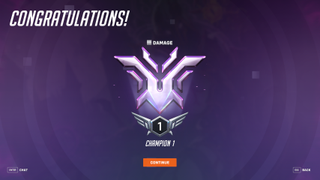
Overwatch 2 ranks are broken up into eight medals that represent each skill tier—with Champion at the top. Each skill tier has five numerical divisions within it that ascend until you break into the next highest tier. So if you're Gold 1 and go up in rank, you'll start in Platinum 5.
The biggest gaming news, reviews and hardware deals
Keep up to date with the most important stories and the best deals, as picked by the PC Gamer team.
Here's all of the Overwatch 2 ranks you can earn:
- Bronze 5-1
- Silver 5-1
- Gold 5-1
- Platinum 5-1
- Diamond 5-1
- Master 5-1 (Top 500 roughly starts here)
- Grandmaster 5-1
- Champion 5-1
Overwatch 2 rank modifiers
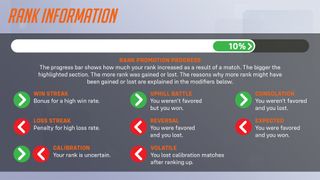
After every competitive match, you'll see a rank information screen showing your progress toward the next skill division. The bar will show a percentage for how much progress you gained or lost. Modifiers adjust your progress more or less based on a number of factors.
Here are all the rank modifiers and what they mean:
- Win Streak - Bonus for a high win rate.
- Loss Streak - Penalty for a high loss rate.
- Calibration - Your rank is uncertain.
- Uphill Battle - You weren't favored but you won.
- Reversal - You were favored and you lost.
- Volatile - You lost calibration matches after ranking up.
- Consolation - You weren't favored and you lost.
- Expected - You were favored and you won.
- Demotion Protection - You are one loss away from a demotion.
Overwatch 2 competitive group restrictions
How playing in a group works in Overwatch 2 ranked
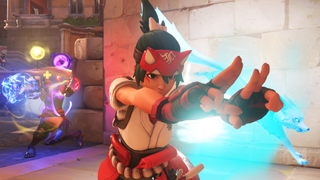
Overwatch 2's competitive modes have some limitations on playing in groups. Most players can group up with pretty much anyone as long as they're not at the far ends of the rank spectrum. High-ranked players, however, have some strict limitations to abide by.
I've listed the rules below, but pay close attention to the difference between a rank and a skill division. Most players can play with anyone up to two whole ranks above or below them, but high-ranked players have to pay attention to the individual skill divisions (e.g. Master 3 or Grandmaster 1).
These rules will be loosened in season 10.
- Bronze, Silver, Gold, Platinum, and Diamond players - Anyone within 2 ranks
- Master players - Anyone within 1 rank
- Grandmaster players - Anyone within 3 skill divisions
- Champion players - One player within 3 skill divisions
Overwatch 2 Top 500 ranks
How Top 500 works in Overwatch 2 ranked
Two weeks into every season will mark the release of the Top 500 leaderboards and unique rank icon. And if the season has a new hero, they will become available to play on the same day.
Top 500 is a shifting leaderboard, or list, of the highest ranked players broken out by each role and a combined role category. You can view the leaderboard under the competitive card in the main menu.
To make it into the Top 500 leaderboard, you technically don't need to be a certain rank. It's a snapshot of the highest ranked Overwatch 2 players and it shifts as people win and lose. If you barely squeeze into Top 500, chances are other players will push you out of it rather quickly. It's fluid, so expect ranks to change on a daily basis.
The requirement to get into Top 500 is to play and win 25 matches in Role Queue or Open Queue. Because Top 500 is quite literally only the top 500 players out of what is probably thousands, if not millions, of players in total, it will largely consist of Master, Grandmaster, and Champion players.
If you take an extended break from playing, your invisible rank, or matchmaking rating (MMR), will decay, or be lowered, to place you in easier games in case you're a bit rusty. Blizzard says your MMR will adjust faster than normal when you return to get you back on track quickly.
Overwatch 2 rank rewards
How Overwatch 2 rank rewards work
Overwatch 2's competitive rewards are very different now with the overhauled system in season 9.
Now that your rank lasts an entire year instead of each season, competitive points (CP) do too. Any CP you earned before season 9 has been converted into Legacy Competitive Points which you can still use to buy golden weapon skins. CP earned in 2024 can only be used to buy jade weapon skins—unless Blizzard adds more rewards before next year. At the end of the year, your 2024 CP will become Legacy CP.
For 2024, jade weapon skins cost 3,000 CP. And golden weapon skins cost 3,000 Legacy CP. Notably, Blizzard has said that it will let you use 2024 CP to buy golden weapons in the near future.
Competitive titles, like "Platinum Role Challenger", are still rewarded at the end of a season so you can use it for the following one, but you no longer have to complete a challenge for them.
Here's how much CP you get per match:
- Win - 10 CP
- Draw - 5 CP
- Loss - 0 CP
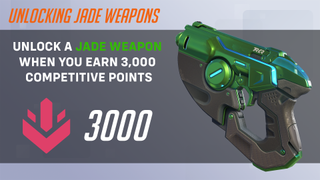
The CP you used to earn at the end of every season based on your rank have been removed. But now, every match increases your "Competitive Progression" meter for bonus CP.
Wins give you three points of progress. Draws and losses only give you one point of progress.
Overwatch 2 MMR
How MMR works with Overwatch 2 ranks
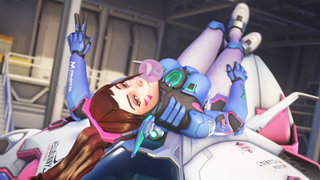
Your matchmaking rating, or MMR, is a hidden, numerical reflection of your skill that exists to give you good matches. You'll never know exactly what it is, but it should be roughly equal to your visible rank.
MMR is a moving target and isn't necessarily the same as your visible skill rating rank. The MMR system compares your skill against other players, which means you'll need to adapt to the meta each patch to maintain or improve your rank.
In order to keep the system free of manipulation by players who want to exploit it, Blizzard can never explain exactly how it works, nor can it show you your exact MMR value.
After all, competitive ranks are an elaborate form of a leaderboard you'd see in a game at the arcade, except it's full of millions of players constantly shifting up and down. The only thing you can control is how you play and how you learn. If you focus on winning matches instead of trying to game the system by playing certain heroes or chasing after certain stats, you should see your rank improve over time.
Other than using tools like Overwatch 2's replay system to learn and improve, the goal with ranked should always be to try to win and have fun.
Tyler has covered videogames and PC hardware for 15 years. He regularly spends time playing and reporting on games like Diablo 4, Elden Ring, Overwatch 2, and Final Fantasy 14. While his speciality is in action RPGs and MMOs, he's driven to cover all sorts of games whether they're broken, beautiful, or bizarre.
Most Popular


